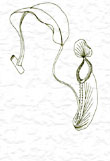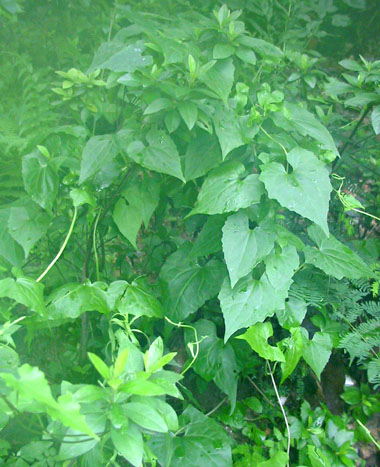

 |
 |
Hong Kong's Bad Biodiversity
by Richard Corlett
Aliens - also known as exotics or introduced species - are species which did not occur here naturally but have been brought to Hong Kong by humans, either deliberately, as crops, ornamentals, domestic animals or pets, or accidentally, as stowaways in ships and cargo planes, as seeds or eggs in soil, or attached to shoes or clothing. Most species which arrive in this way do not "escape" to form wild populations, and most of the species which have escaped are confined to places that are continually disturbed by humans. The weeds of cultivated areas, roadsides and urban wasteland are mostly exotics, as are the fish in concrete channels, and such conspicuous urban invertebrates as the "American" Cockroach and the Giant African Snail. Most of these urban exotics are doing no obvious harm and some contribute positively to the quality of city life. However, they also form the pool of species from which are drawn the small number of ecologically-damaging ones: the invasive species.
Invasive species are aliens that invade natural or semi-natural communities. Out of the 150 or so well-established alien plant species in Hong Kong, less than a dozen have become invasive. The climbing American composite Mikania micrantha – Mile-a-Minute – is the most obvious example, but even this is confined to relatively disturbed sites. The "success" rate seems to be higher among birds and mammals, but the species which have done well in natural habitats are all from tropical East Asia and are apparently occupying niches vacated by the loss of the same or closely-related species when Hong Kong was deforested centuries ago. Thus, a dozen or so introduced bird species have become established in forest and shrubland in Hong Kong, but most are southeast China species that were probably part of Hong Kong's original native forest avifauna.
While most aliens do little harm, a small proportion cause massive ecological and/or economic damage. This small proportion is enough to make exotic species one of the major threats to global biodiversity. There have so far been two alien disasters in Hong Kong: the Pinewood Nematode (from North America) and Pine-needle Scale Insect (from Taiwan), which together virtually eliminated the native Pinus massoniana in the 1970s and 80s. The chance of another disaster increases every time an additional alien species becomes established in Hong Kong. And any species established here will eventually spread into mainland China, as both pine pests have already done. Exotic species that do no harm in Hong Kong may be much more damaging in the agricultural lowlands of southern China.
What needs to be done? Firstly, we need to identify the major routes by which alien species enter Hong Kong and see if these can be controlled. Hong Kong's open borders make it impossible to prevent all introductions, however, and a second line of defense is essential. We need a system by which newly established exotics are identified, reported and, if possible, exterminated, before they can spread: a permanent group of government Alien-Busters. Who ya gonna call?
 |
 |
P.1
|
Porcupine! |
 Copyright © 2000 |